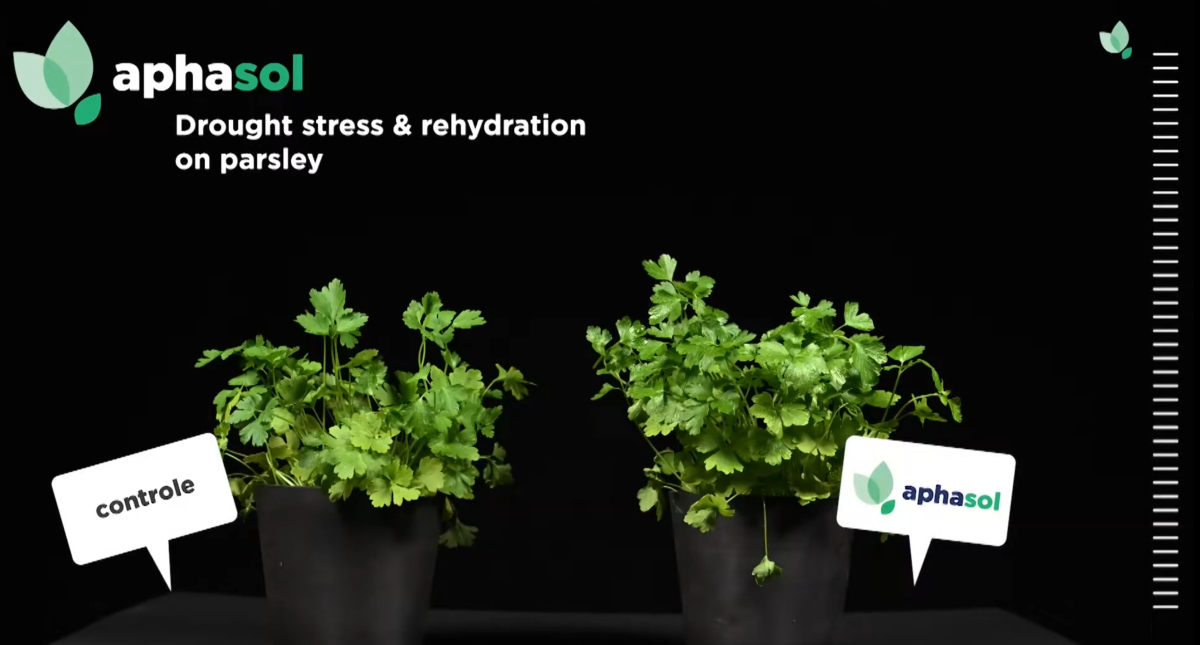Timelapse video: treated plants recover faster from drought stress
Heat and drought are becoming the new normal. The key question isn’t whether stress will occur, but how quickly a crop can recover. In the timelapse below, two parsley plants face identical drought stress.
Check how each plant reacts.

In the timelapse below, two parsley plants face identical drought stress:
One plant was pre-treated with Aphasol (biostimulant)
The other served as an untreated control
Both wilt during the stress period. Once water is reapplied, the difference is clear: the treated plant rebounds faster, resumes growth, and shows stronger vitality.
Why the difference?
Aphasol supports the plant’s natural stress resilience and nutrient use efficiency. When applied preventively, it helps crops cope better with abiotic stress such as drought and heat—resulting in less damage at the peak and faster recovery after rain or irrigation.
What this means in practice
Think ahead: preventive use before expected stress delivers the most impact.
Integrate smartly: biostimulants work best as part of a broader crop strategy (nutrition, timing, and agronomy).